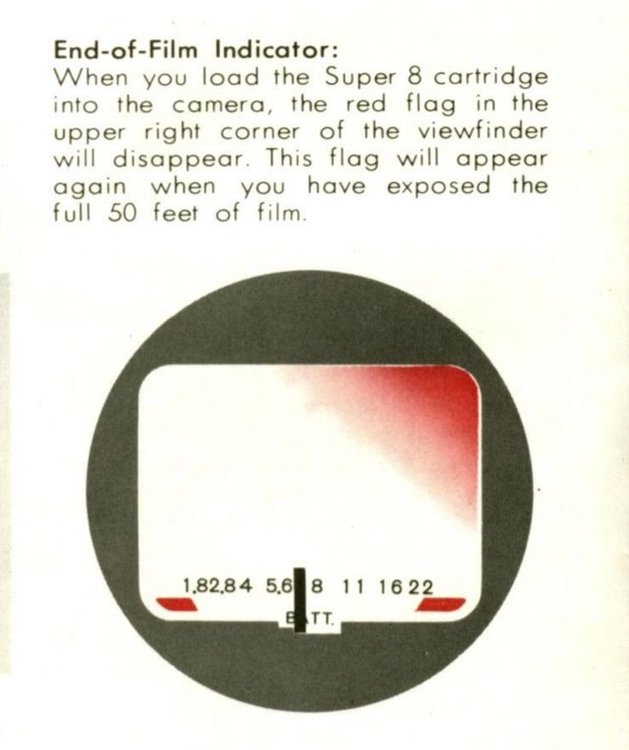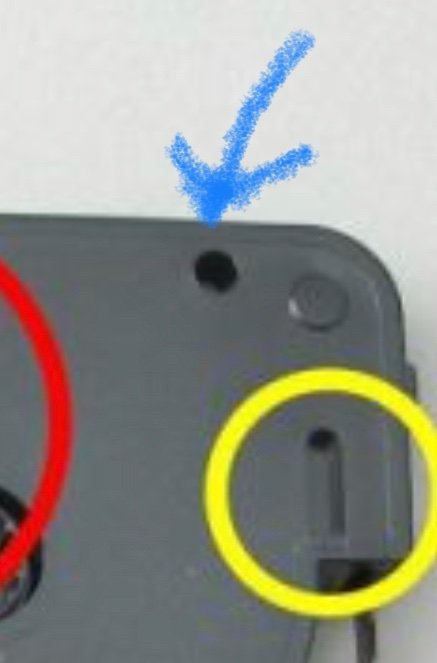-
Posts
580 -
Joined
-
Last visited
Everything posted by Joerg Polzfusz
-
I found a link with some details about Seagull‘s „generic viewfinder magnifier“: https://www.amazon.co.uk/Seagull-Viewfinder-Magnifier-Canon-Minolta/dp/B006GP9BUI
-
Hi! For many 35mm still photography cameras there have been special viewfinder magnifiers, e.g. this one: https://www.bhphotovideo.com/c/product/234516-REG/Leica_12004_Viewfinder_Magnifier_1_25x_for.html But I have not seen anything like this for your Beaulieu. The only accessory that comes to my mind is the „angle viewfinder“ that includes a small magnification, too. But it will change your way of working. I remember a generic viewfinder magnifier made by Seagull (China), a company that obviously went bankrupt 10 or more years ago. It came with some adapters that made it attachable to e.g. a Minolta Dynax 5 and a Fujica ZC1000 (like Seagull’s generic angle viewfinder). But I don’t know whether it came with a matching adapter for your Beaulieu. And if I remember correctly, at least on the Dynax 5, only 90% of the camera‘s viewfinder was visible. So some information, that was displayed at the viewfinder’s border, wasn’t visible with this magnifier anymore.
-
B&W? Color? Reversal? Negative?
-

Servicing lenses - EUROPE
Joerg Polzfusz replied to Boris Kalaidjiev's topic in Lenses & Lens Accessories
https://sites.google.com/site/olexserviceskinor/ Two alternative links for Olex in the Ukraine (above and below) https://sites.google.com/site/olexservicelenses/home/new-solutions/pl-upgrade-of-lomo-prime-spherical-lens-with-konvas-2m-lens-housing-outside-slide-pin-system -

Servicing lenses - EUROPE
Joerg Polzfusz replied to Boris Kalaidjiev's topic in Lenses & Lens Accessories
Did you try this company in Braunschweig (Germany)? http://www.ffs-tritec.de -

Servicing lenses - EUROPE
Joerg Polzfusz replied to Boris Kalaidjiev's topic in Lenses & Lens Accessories
Ukraine? Then it was most likely „Olex Services Konvas“ - but the link seems to be dead: http://sites.google.com/site/olexserviceskonvas/ -

Light & Grip system: Europe vs. US
Joerg Polzfusz replied to Boris Kalaidjiev's topic in Lighting for Film & Video
https://en.m.wikipedia.org/wiki/Grip_(occupation) I guess that the „which part of the world“ isn’t that clear as US productions are sometimes also partially shot in Europe (e.g. the last Mission Impossible) and vice versa. And unless they’re using local teams, they will continue with their way of working. -

Unions Opposition to Digital Capture?
Joerg Polzfusz replied to Max Field's topic in General Discussion
There’s one aspect that will make the use of AI inevitable: money. The computer doesn’t produce anything where it later owns any copyright. So you will only have to pay for the energy and the computing time. This will save you a lot of money (and maybe even time and hence more money). There’s another aspect that nobody has thought of so far: No AI is able to create anything new (yet?). It can only remix already existing human ideas/creations. Therefore it might violate existing copyrights. And the results might become boring and predictable on the long run. Another copyright-related topic: When fed with enough visual and acoustic material, it can easily replace a human‘s head/body/voice with the corresponding data from someone else. So you could shoot with some cheap, unknown, newbies as actors and then replace them with data from e.g. John Wayne and Marilyn Monroe. And then you can do the same for the same movie with data from Dwayne Johnson and Scarlett Johansson. So you can easily flood streaming services with millions of variations of the same movie that you only shot once. Perfect, isn’t it? But here comes the tricky part: The famous actors never got paid for this and their data. (That’s one point that will sooner or later lead to more strikes and endless legal disputes. - But this point is similar to the previous/current strikes where the employees wanted to get their share from the profit made with „new markets“ like video-cassettes, DVDs or streaming services.) -
BTW: HBO‘s TV series „Winning Time: The Rise of the Lakers Dynasty“ was completely shot on Super8, too.
-
You might also want to talk with the forum-member Mr. Matthias Fleischer ?
-
Another feature film on Super8: http://www.friendlyfirefilms.com/superduper8.html
-
In the past, you would have attached a few pieces of cloth to a fan and then put that in front of one of your lightsources to have a more unsteady, random flickering light. Today, you can certainly switch LEDs to "randomly flickering".
-
Hi Just two points: * Indiana Jones 5 already contains AI generated scenes (basically all sequences that show a young Harrison Ford). * You can use ChatGPT to automatically create transcripts of videos (and then e.g. to summarize it or in combination with tools like DeepL automatically translate it into other languages). So we’ll all end up using AI in one form or the other pretty soon. Hence, I would recommend to play around with ChatGPT, Dall-e, Stable-Diffusion, FlexClip, Synthesia, … while it’s still free. ? You’ll easily find out that the AIs have many limitations and will create a lot errors when generating images (humans with three arms and hence 18 fingers etc.). But the results are drastically improving every week. And you should at least know the current limitations when arguing against the use of AI in your next projects. ?
-
Hello Tyler, did you set the LED to 3200K and shot with a tungsten balanced film or to 5500K with a daylight balanced film? Or have you been “color correction filters” like a Wratten 85 or 80A? thanks and regards Jörg
-
Hi! I can fully understand the workers‘ point of view - it’s not fair that everyone else is making lots of money with their work with them only getting some peanuts. But what will be impact of this strike? Will Kodak have to file insolvency again (as their major customer is Hollywood)? Will the Studio Babelsberg be converted into flats and hotels? (Despite being located in Germany, they used to make most of their money with Hollywood productions.) Will the cinemas survive the gap created by the strike? (Amazon Germany filled the „Covid-19 gap“ with Non-US-Productions (from China, Russia, South Korea, …). But what source can be used by the cinemas to attract paying customers?) …
-
Could this be the „end of film indicator“? (I would have expected it to be much closer to the viewfinder and hence not visible on this photo. But it might be worth a try.)
- 7 replies
-
- 1
-

-
- super8
- elmo super 110
-
(and 1 more)
Tagged with:
-

Slow Motion Mid-Take
Joerg Polzfusz replied to Luke Mascioli's topic in Visual Effects Cinematography
When shooting with S8, you would need to do it in camera with an additional tool like the http://cineassist.filmcurl.com. But be aware that this heavily depends on your camera. -

Slow Motion Mid-Take
Joerg Polzfusz replied to Luke Mascioli's topic in Visual Effects Cinematography
Hi! Speed ramping is normally done in post. The way to do it in Adobe Premiere Pro is explained here: https://motionarray.com/learn/premiere-pro/premiere-pro-speed-ramping-tutorial/ IMHO the results are better when shooting the whole scene in SloMo and then letting the video editing software skip the obsolete frames. But this depends on the camera and the software. -

Continuous-take music video, Super-8
Joerg Polzfusz replied to Niels kakelveld's topic in General Discussion
Hi! Most microphones for S8-cameras are unidirectional. There are hundreds of modern equivalents to them. However, there aren’t any modern „boom microphones“ that I know of (as they expect you to have proper microphone stands/tripods with extensions etc.). The main questions are: Mono or stereo? Do you only need the sound as a reference? Or should it be the only source for your final result? Do you know the difference between a microphone directly attached to the guitar and a microphone being located several meters away? Why don‘t you use a wireless microphone or a sound-guy with a boompole? -
On Muddy‘s webpage, you can also see one of those „additional holes“ that are present on the cartridges of the Fujichrome RT200N, but not on the other cartridges…
-
BTW: Here‘s an interesting Japanese article on the three means of indicating the film speed (with Google translation): https://www-muddyfilm-net.translate.goog/2006/04/single8speedset.html?_x_tr_sch=http&_x_tr_sl=auto&_x_tr_tl=de&_x_tr_hl=de According to that page, the „lower notch“ isn’t to distinguish between tungsten and daylight balanced films, but between b&w (notch filled = not present) and Fujichrome (notch present). Strange…





